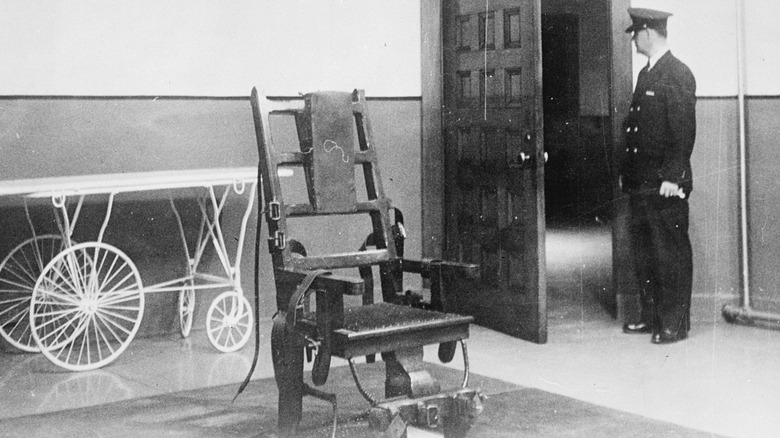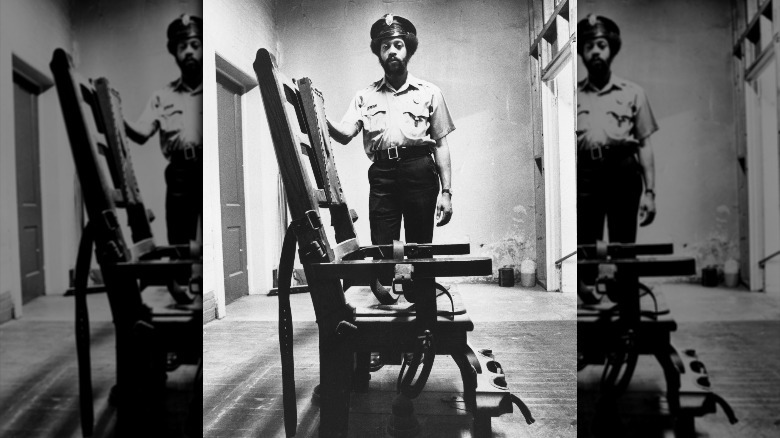This Is What Really Happens To Your Body In The Electric Chair
Believe it or not, the electric chair was first invented as a more humane way to kill than hanging. According to History, a dentist saw a man get electrocuted in 1881 when the technology was relatively new, and thought the man's death looked painless. Up until then, hanging was the go-to form of execution for those given the death penalty, but History reported that method was slow, with some hanging for up to a half-hour with broken necks while slowly suffocating to death. In 1890 at a New York prison, an inmate convicted of murdering his common-law wife with an ax became the first person killed by the electric chair.
Since then, 4,374 people have been put to death by jolts of electricity coursing through their bodies, according to the Death Penalty Information Center. Specifically, a person is shaved and strapped into the electric chair. A moist sponge is put on their head and covered by an electrode shaped to fit a skull. Another electrode is attached to a leg. Finally, the condemned person is blindfolded.
Once the execution team is out of the death chamber and in the observation room, the warden gives the executioner the go-ahead to flip the switch, sending 500 to 2,000 volts of electricity into the convicted person's body for 30 seconds at a time. Between each shock, a doctor waits for the body to cool enough so that they can check for a pulse. This goes on until the person dies, the Death Penalty Information Center explained.
Eyeballs can pop out of sockets
While all that electricity is coursing through the human body, the person's skin and muscles heat to the point where steam or smoke — along with the smell of burning flesh — fills the room, according to the Death Penalty Information Center.
"The prisoner's eyeballs sometimes pop out and rest on [his] cheeks. The prisoner often defecates, urinates, and vomits blood and drool. The body turns bright red as its temperature rises, and the prisoner's flesh swells and his skin stretches to the point of breaking. Sometimes the prisoner catches fire," former U.S. Supreme Court Justice William Brennan once described. "Witnesses hear a loud and sustained sound like bacon frying, and the sickly sweet smell of burning flesh permeates the chamber."
According to the San Diego Reader, the electrical current mostly goes through the muscles and veins, traveling into the sinuses, eye sockets, and brain and down through the electrodes attached to the legs. There is so much damage being done that it's not fully understood which aspect causes death. Per the San Diego Reader, though, when it's done right, death is likely caused by heart fibrillation and paralysis of the brain centers that control breathing. Ideally that happens before the person dies from simply being charred to death.

